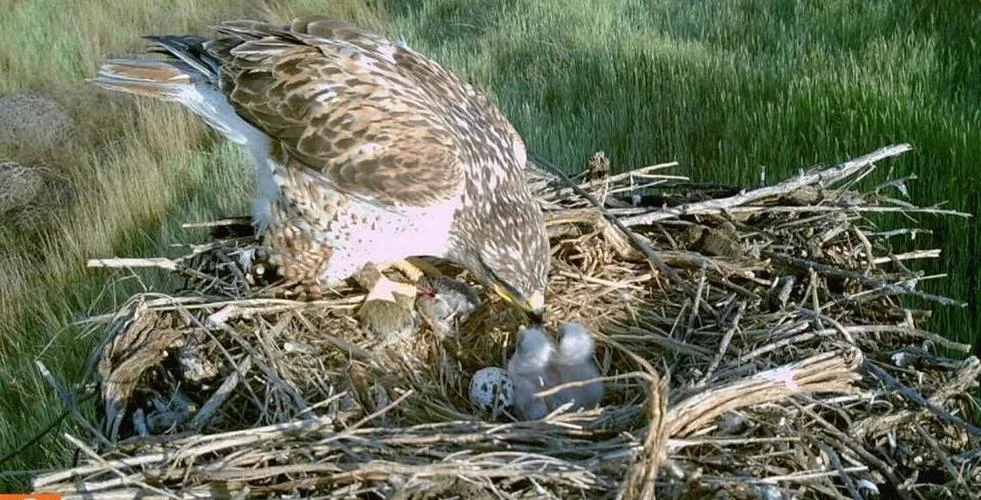
Saving the Endangered Ferruginous Hawks: A New Hope in Eastern Washington
In the heart of Eastern Washington, the struggle to protect the endangered ferruginous hawks has taken a positive turn. These majestic birds, once symbols of nature's intricate balance, have faced a steep decline in population due to various environmental threats. However, recent interventions by biologists with the Washington State Department of Fish and Wildlife are showing promising results, highlighting the importance of conservation efforts.
One notable success story involves a pair of ferruginous hawks that have nested in a specially designed platform near Touchet. After years of unsuccessful attempts to reproduce, these hawks now have welcomed their sixth successful hatch thanks to the strategic installation of nest platforms in their habitat. These platforms provide a safer space for the birds, away from ground predators and human interference.
Mark Vekasy, a biologist involved in the project, expressed his optimism, saying, “We’re very pleased.” The hope is that around 70% of these platforms will lead to successful broods, which, if achieved, could significantly enhance the local population of ferruginous hawks. These birds, which are characterized by their impressive wingspan and striking features, were once commonly found across the state, but their numbers have dwindled alarmingly over the decades due to habitat loss, illegal shooting, and collisions with human structures.
Historically, it’s estimated that, in the early 20th century, ferruginous hawks thrived not just in Eastern Washington, but across expansive shrub steppe habitats. However, state studies conducted between the mid-1970s and now reveal an alarming decline, with current estimates suggesting that their population is “very small.” This stark contrast underscores the critical urgency of protective measures, as agricultural expansion encroaches on their natural habitats.
As these hawks adapt to the provided nesting platforms, biologists have also gained insight into their dietary habits. Through the use of trail cameras, researchers have observed that while their traditional prey of jack rabbits and ground squirrels are becoming scarce, the hawks have adapted by hunting pocket gophers—signifying resilience in the face of adversity.
The recent deployment of cellular trail cameras further aids research, allowing biologists to monitor the hawk's nesting behaviors in real-time. This innovative technology is crucial in understanding their migration patterns, establishing invaluable data for future ecological studies and conservation strategies.
As we witness these positive developments, the question remains: will these conservation efforts be enough to ensure the survival of the ferruginous hawks? With continued commitment and innovation from biologists, there is hope that these magnificent raptors will thrive once again in the skies of Washington. What are your thoughts on the measures being taken for endangered species like the ferruginous hawk? Share your views in the comments below!